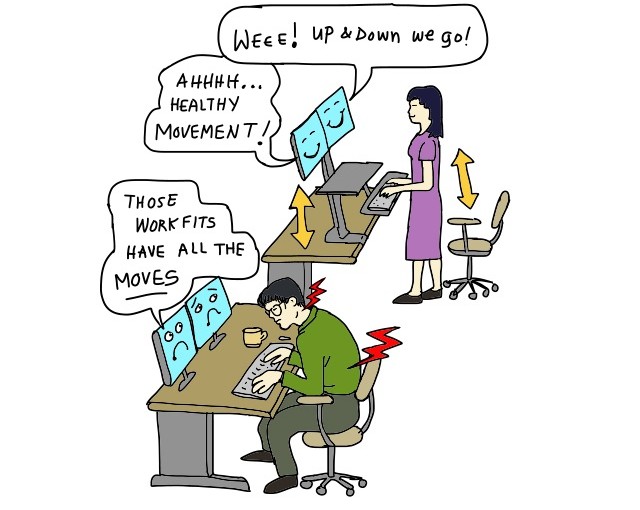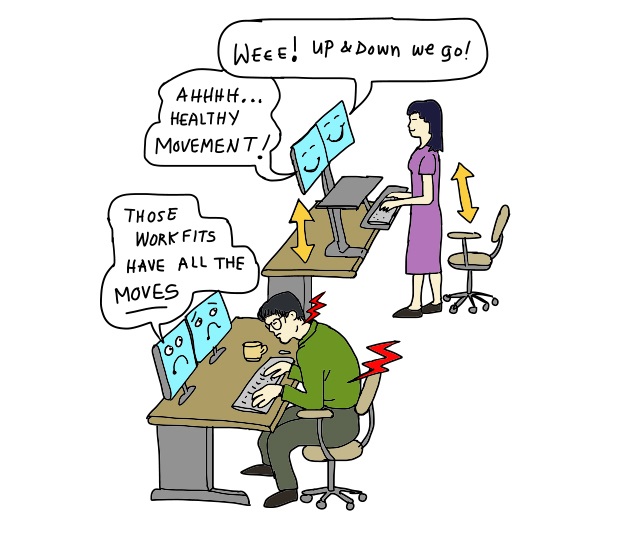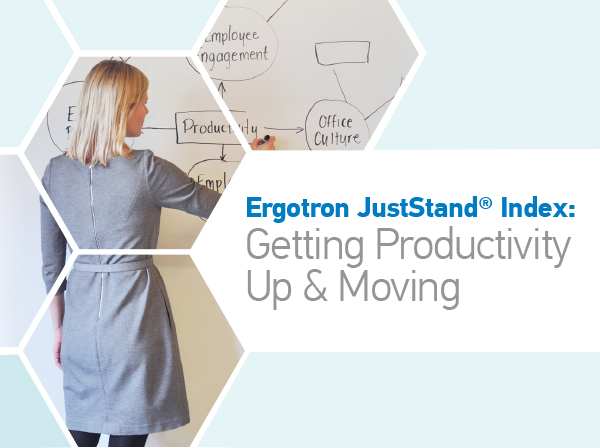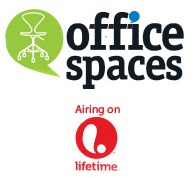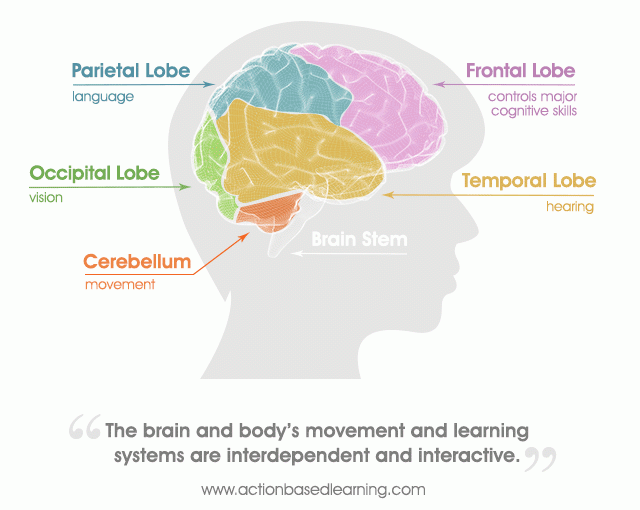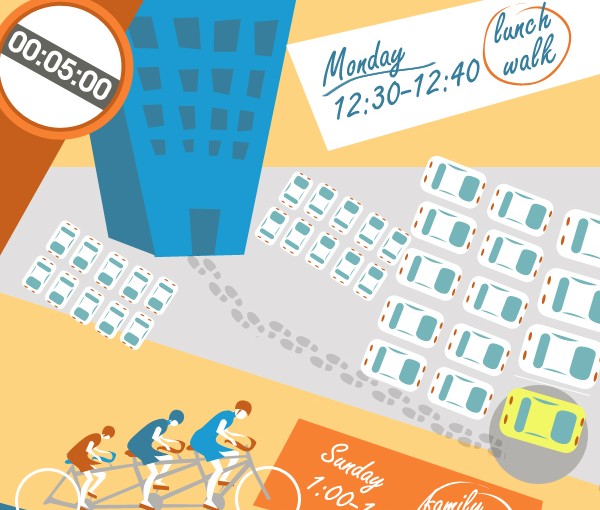
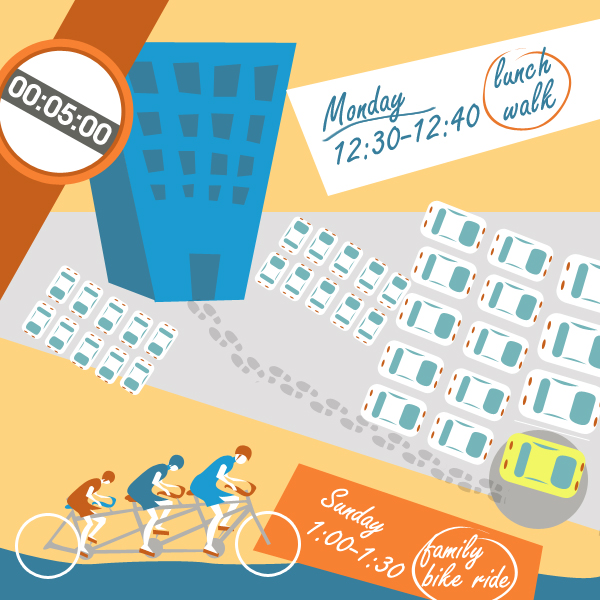
Remember your New Year’s resolutions to lose weight (21% of us) or exercise more (14%)? Well, if you’re like many January 1st resolvers that researchers tracked, you may have fallen off the wagon by now. Does that describe your situation? BJ Fogg, PhD, Director of Stanford University’s Persuasive Tech Lab, says that tiny habits are what get you big results. For people who are not exercising at all, the most sustainable goal is to simply move more during the day.
Here are four baby steps to help you get a move on – and enjoy a multitude of related health benefits, such as lowering weight, cholesterol, and blood pressure. Rewards that last a lifetime!
 Start small. Start by standing more during the day, maybe during those times that you’ve pinpointed as being most sedentary, such as computer time at work or TV time in the evening. Can just standing possibly make a difference in your health? Yes, research suggests it does! Any amount of activity is better than zero, and can also burn calories. How many calories? Check out our calorie calculator to find out! Often you can burn enough calories each day to dodge the one to two pound weight gain that creeps up on most of us annually.
Start small. Start by standing more during the day, maybe during those times that you’ve pinpointed as being most sedentary, such as computer time at work or TV time in the evening. Can just standing possibly make a difference in your health? Yes, research suggests it does! Any amount of activity is better than zero, and can also burn calories. How many calories? Check out our calorie calculator to find out! Often you can burn enough calories each day to dodge the one to two pound weight gain that creeps up on most of us annually.
 Select new behaviors. Make a list of a variety of activities that get your body moving. Movement doesn’t have to raise your heart rate, build big muscles, make you sweat, or take place in a gym. Be on the lookout for ways to move more whenever and wherever possible, as part of your normal daily lifestyle. If an activity strikes you as enjoyable as well as healthy, so much the better!
Select new behaviors. Make a list of a variety of activities that get your body moving. Movement doesn’t have to raise your heart rate, build big muscles, make you sweat, or take place in a gym. Be on the lookout for ways to move more whenever and wherever possible, as part of your normal daily lifestyle. If an activity strikes you as enjoyable as well as healthy, so much the better!
Examples: Ditch labor-saving devices like the TV remote, dishwasher – or even elevators! Get on the floor and roughhouse with your kids or pets. Take up a new family pursuit – bowling, ping-pong, or mini-golf, anyone? Set a timer and see how long you can go before sitting down on the weekend. Do an office mini-circuit of squats, lunges, and chair dips. Wear comfortable clothing and shoes to work so you can go for walking meetings. Bring your fitness band, too, and you’ll be ready to stretch during those long conference calls. The list is endless.
 Ramp up. Once you’ve chosen some new habits that you’d like to establish, create small challenges for yourself. For instance, if 10,000 steps a day is your goal, start by adding 500 steps and go up from there. Turn it into a game by using an activity tracker to measure your progress and nudge you on to your end-goal. Remember, nice and easy does it. You’ll hit the recommended 10,000 daily steps before you know it!
Ramp up. Once you’ve chosen some new habits that you’d like to establish, create small challenges for yourself. For instance, if 10,000 steps a day is your goal, start by adding 500 steps and go up from there. Turn it into a game by using an activity tracker to measure your progress and nudge you on to your end-goal. Remember, nice and easy does it. You’ll hit the recommended 10,000 daily steps before you know it!
 Find a buddy. It’s fun to work out with a partner or group; you can encourage each other and rely on the energy of someone else when your own motivation is flagging. You’re less likely to hit the snooze button when a pal – including the four-footed type – is waiting to go for a walk with you. Even if you don’t have a workout partner in real time, you can use social media to connect with others for inspiration or accountability. Or, reach out to health professionals (doctor, nurse, fitness trainer, yoga teacher, etc.) for more guidance.
Find a buddy. It’s fun to work out with a partner or group; you can encourage each other and rely on the energy of someone else when your own motivation is flagging. You’re less likely to hit the snooze button when a pal – including the four-footed type – is waiting to go for a walk with you. Even if you don’t have a workout partner in real time, you can use social media to connect with others for inspiration or accountability. Or, reach out to health professionals (doctor, nurse, fitness trainer, yoga teacher, etc.) for more guidance.
What are the advantages to dialing in on a couple of tiny tweaks at a time – rather than giant leaps to overhaul sedentary behaviors? They’re easier to implement so you’re more likely to get results. Confidence gained after one success will naturally lead to another, and so on, and so on.


